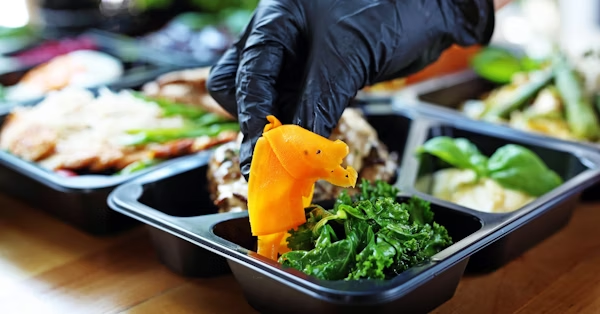Introduction: Understanding the Importance of Food Hygiene
Maintaining high food hygiene standards is a fundamental aspect of every food business. Whether you’re running a restaurant, food truck, or catering service, ensuring food safety is non-negotiable. Poor food hygiene practices can lead to serious health risks, making foodborne illnesses a significant concern. In fact, one of the leading causes of illness and death worldwide is food contamination. This is why proper REHIS food hygiene training and following the recommended guidelines can protect both your customers and your business from harmful consequences.
Why Food Hygiene Matters
When food hygiene is not prioritized, bacteria, viruses, and other pathogens can contaminate food, leading to dangerous diseases. Harmful microorganisms like Salmonella, E. coli, and Listeria are commonly transmitted through improperly handled or stored food. They can lead to symptoms ranging from mild stomach discomfort to severe gastrointestinal illness, sometimes even resulting in long-term health complications.
The risks of poor food hygiene extend beyond illness and injuries. A restaurant or food business with a bad reputation for food safety will experience a decline in customers and legal repercussions. Understanding the hidden dangers of poor food hygiene can help businesses avoid these dire consequences.
Common Hazards in Poor Food Hygiene
-
Cross-Contamination
One of the most common dangers of poor food hygiene is cross-contamination. This occurs when harmful microorganisms are transferred from one surface or food item to another, typically via utensils, cutting boards, or hands. For instance, raw meat, which often contains bacteria like Salmonella, can contaminate vegetables or ready-to-eat foods if not properly separated.
How to Avoid It: To prevent cross-contamination, always use separate chopping boards for raw meats and vegetables. Ensure proper handwashing between handling different foods and clean surfaces frequently with hot soapy water.
-
Improper Temperature Control
Food safety guidelines emphasize the importance of keeping hot foods hot and cold foods cold. Improper temperature control can encourage bacterial growth. Foods left at temperatures between 5°C and 63°C (known as the danger zone) are more likely to harbor pathogens that cause illness.
How to Avoid It: Ensure that food is stored at safe temperatures. Hot foods should be kept above 63°C, and cold foods should remain below 5°C. Always check the temperature of your storage units and cooking equipment regularly.
-
Unclean Equipment and Surfaces
The cleanliness of cooking and storage equipment directly affects the safety of the food being prepared. Dirty surfaces and tools can harbor harmful microorganisms, which transfer easily to food items during preparation. Over time, neglecting to clean your kitchen tools can result in a buildup of bacteria, posing a serious health risk.
How to Avoid It: Regularly clean all equipment and surfaces, particularly those that come into contact with food. Use sanitizing solutions to kill germs and bacteria on cutting boards, countertops, and kitchen utensils.
-
Poor Personal Hygiene
Food handlers who do not practice proper hygiene can easily spread harmful bacteria. This includes not washing hands properly before handling food, working while sick, or touching food with dirty hands. Even seemingly minor lapses in personal hygiene can lead to serious consequences for consumers.
How to Avoid It: Ensure that all food handlers wash their hands thoroughly before touching food and after handling raw ingredients. Encourage staff to wear clean uniforms, use gloves, and maintain overall personal cleanliness.
-
Contaminated Water Supply
Water is essential for washing food and hands, but it can also be a source of contamination if it’s not clean. Contaminated water can contain harmful pathogens that can affect food safety, especially when used for cleaning dishes, utensils, or fruits and vegetables.
How to Avoid It: Always ensure that the water used in food preparation is clean and safe for consumption. Regularly inspect your water supply and perform maintenance on filtration systems.
How to Safeguard Your Business from Food Hygiene Dangers
-
Implement a Robust Food Safety Management System
One of the best ways to safeguard against food hygiene risks is by implementing a comprehensive Food Safety Management System (FSMS). This system should outline the processes for food safety, from purchasing ingredients to final preparation and service. It involves critical control points such as cooking temperatures, cleaning schedules, and personal hygiene policies. Having a FSMS in place ensures that the food you serve is safe for consumption and adheres to the best hygiene practices.
-
Conduct Regular Training for All Staff
Ongoing REHIS food hygiene training is critical for staff in maintaining high standards. Food handlers should be well-versed in food safety principles, including handwashing techniques, food temperature management, and how to handle different types of food. In the UK, obtaining a REHIS food hygiene certificate can help food establishments meet the required food safety regulations.
-
Monitor and Review Hygiene Practices
Regularly monitoring food hygiene practices is key to maintaining high standards. This includes performing internal audits and reviewing hygiene logs for cleaning and food safety procedures. Regular checks ensure that all food safety measures are being followed and identify any areas that need improvement.
-
Follow Local Health and Safety Regulations
Each country or region has its own set of food safety guidelines and regulations. In the UK, the Food Standards Agency (FSA) sets out the rules that food businesses must follow. These regulations ensure that food is prepared, cooked, and stored safely for public consumption. It is important to stay up-to-date with any changes to these regulations and to ensure compliance at all times.
The Benefits of Proper Food Hygiene
-
Protecting Customers’ Health
By prioritizing food hygiene, you protect your customers from foodborne illnesses, ensuring they have a safe dining experience. Healthier customers translate to positive reviews, repeat business, and a strong brand reputation.
-
Reducing Costs and Waste
When food hygiene is practiced properly, it can prevent waste and reduce the costs associated with foodborne illnesses. Contaminated food can result in waste due to spoilage, while illness outbreaks can lead to legal expenses, lost revenue, and damage to your business reputation.
-
Improving Your Reputation
A business that consistently meets food hygiene standards builds trust with customers. Whether through word-of-mouth or online reviews, people are more likely to choose your restaurant or food service when they know your establishment maintains the highest hygiene standards.
Conclusion: Make Food Hygiene a Priority with Emcare
In conclusion, the hidden dangers of poor food hygiene are not to be underestimated. From the risk of contamination and foodborne illnesses to the financial and reputational costs of poor hygiene practices, the consequences can be severe. By prioritizing food safety in your business operations, training staff regularly, and adhering to hygiene protocols, you can avoid these dangers and safeguard both your customers and your business.
At Emcare, we understand the importance of food hygiene and are committed to supporting businesses in maintaining the highest standards. Contact us today for more information on how we can help you enhance your food safety practices.
For more information about technology visit Anderson tomorrow.









